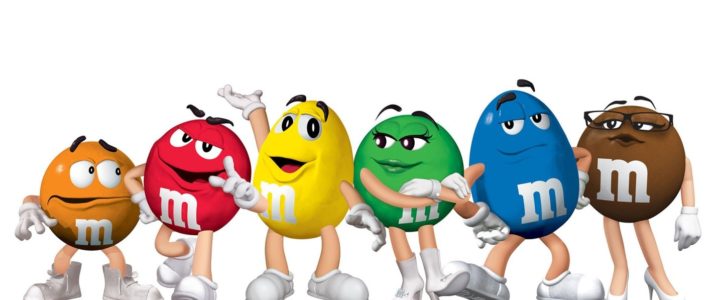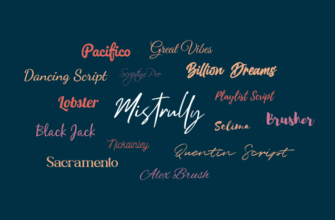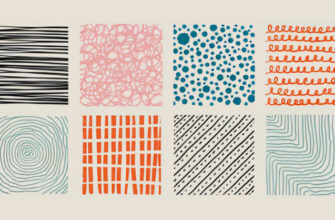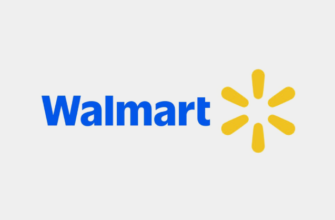Mascots are incredibly efficient at endearing a brand to its audience. As intelligent branding elements, they are influential enough to give an inanimate brand a soul, a character, and a personality. Often based on humans, animals, or even be animated objects like talking M&Ms.
When done right, they can be quite effective in humanizing a brand, enabling it to create lasting connections with its audience. One fine example of such a connection is Kellog’s Tony the Tiger that kids immediately feel attracted to. Tony the Tiger imparts important nutritional information, sends a message of health and fitness, and makes cereal time even more fun with his relatable personality.
Statistics have shown that mascots are more effective than celebrity endorsers when it comes to connecting with the audience and also in terms of cost-effectiveness. While every time a celebrity tweets to promote your brand can cost you anywhere from $5,000-$60,000, a mascot is a one-time expense.
All you have to do is pay a designer once and then the mascot is yours forever. The cherry on top: mascots don’t age or retire, they don’t get themselves into embarrassing situations that can hurt your brand by extension, and they certainly don’t ask for sudden vacations at crucial times.
But even with all the cost savings aside, the best thing about mascots is they humanize your brand. From a soulless identity to a relatable character, they make your brand message a house-hold mantra. History has shown that people can be fiercely protective of brand mascots that they have grown up with. Remember the appalling reactions that surfaced when McDonald’s decided to replace its Hamburglar with what some people called a ‘creepy imposter’?
That’s the power of a powerful mascot. It punches a lot of nostalgic feel in its arsenal that can transcend generations and make a brand more than just a business.
But how exactly is a mascot able to do that?
Now let’s talk about different ways a mascot is able to humanize a brand. Are there any inherent qualities that make mascot able to do that? Or is it more about designing, advertising, and strategy? Let’s dig.
Mascot Logos Give a Face to the Brand
First off, not all mascots are logos. They are more commonly additional branding elements that are used to extend the brand characteristics and personality. However, there are brands that use their mascots and logos as the same thing. The most recognizable of this concept is Android’s robot mascot logo.
Example 1: Android’s Robot Mascot

Image: Wikimedia
With its round eyes, characteristic antenna-like ears, and a round shape, Android is a charming, endearing, and relatable mascot logo. It is the perfect face for Android, a brand that is for people: accessible, modern, inclusive, and global.
Example 2: KFC’s Colonel
Another brand mascot logo than endeared the brand to its audience and helped make a solid connection with its target market was KFC. Launched in 1952, KFC’s Colonel rose to international fame and became a lovable symbol of fried chicken everywhere.
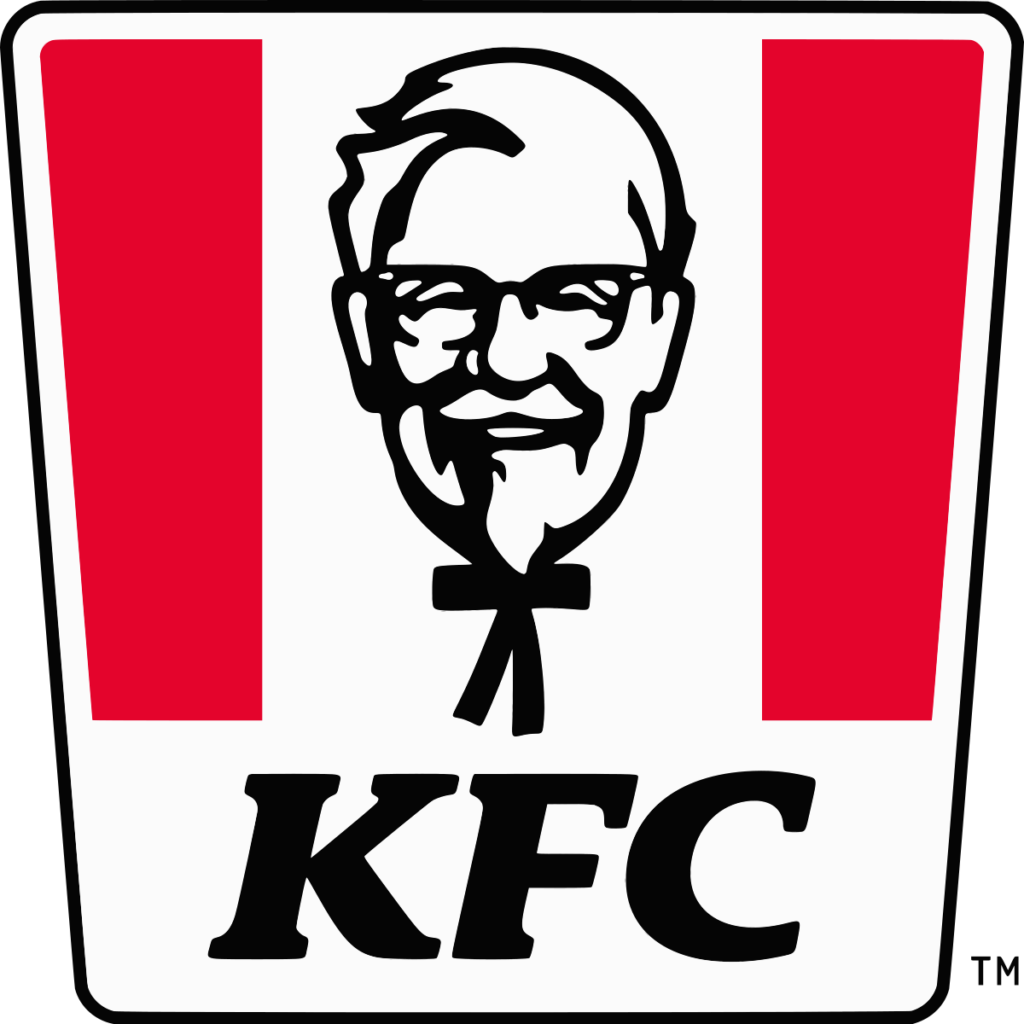
Image: Wikipedia
Because the name mascot had a decidedly Southern appearance and advertised itself as a ‘Sunday dinner’ fixer, the brand evoked a sense of Southern hospitality, large dinner spreads, and an overall family feel. Colonel’s personality of a jovial grandfather helped solidify the brand and the despite Colonel Sander’s death in 1980, the mascot logo is still retained by KFC as its international symbol of hospitality and comfort tasty food.
Mascots Help Build & Narrate Your Brand Story
An important element of branding is storytelling – a staple of human existence. Without stories, there won’t be a history or even curiosity. Human beings connect to stories on a deeper level. Brand mascots that are able to do that – tell stories – remain forever etched in our memories and become a part of our own tale.
This is exactly what Duracell’s Bunny was able to do for the brand.
Example 1: Duracell Bunny
Through its hyper-activeness, its appearance, and its speed, it was able to portray the brand qualities with absolute precision. It helped tell the brand’s story of being longer-lasting, not requiring you to change your batteries often, and being a friendly, reliable brand.

Image: Wikipedia
Example 2: Pillsbury’s Doughboy
What the Bunny did for Duracell, the Doughboy mascot did for Pillsbury. Like the perfectly raised bread, it was round, fluffy, and you couldn’t help but longed to poke its belly.
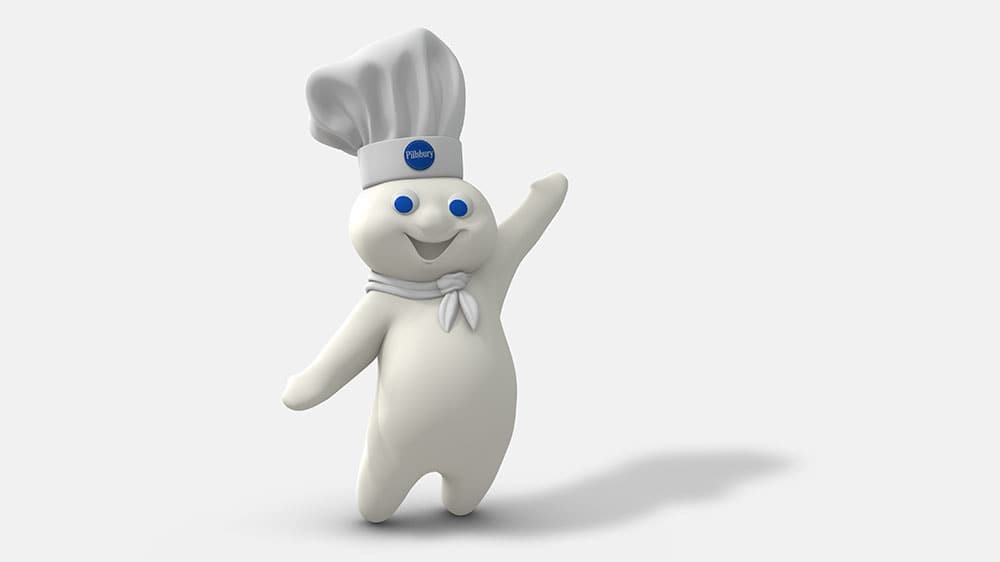
Image: Pillsbury
It personified the tale of freshness and doughy goodness that Pillsbury wanted to tell. Originally named Poppin’ Fresh, the mascot came to be popularly known as Pillsbury’s Doughboy – a fact that emphasizes how a well-designed and well-marketed mascot can make itself an integral part of the brand itself.
Mascots Help Create Emotional Connections
To be human is to be able to feel. Emotions are central to our existence. And one way how brands make themselves relevant to us or why we sometimes prefer one brand over another similar one is our emotional attachment to it. If you forget all the debates about why Coca-Cola is better than Pepsi, the crux remains that – through effective and intelligent advertising – Coca-Cola has been able to become a part of our celebrations, hangouts, and relationships.
To make sure that your brand can establish strong emotional connections to its audience, mascots are a great way to go. Because they have human-like characteristics, people are drawn to them more and feel more strongly about them than they would for a mascot-less brand. We’ve already shared an example of these strong emotional connections: McDonald’s above.
For another one, consider Disney’s Mickey Mouse.
Example 1: Disney’s Mickey Mouse
At one time, it had a recognition rate of 98% among children all over the world. In other words, Disney’s Mickey was so popular that children all over the world knew him. Can you imagine such power? US Presidents took pictures with him, and even at its lowest, Mickey Mouse-related merchandise made up of Disney’s 40% consumer products revenue.
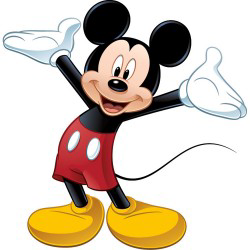
Image: Wikipedia
And why all of this was possible? Because the friendly rodent was able to carve a place out for itself in children’s emotions and made itself a part of their childhood. For kids growing into adults, it became an emotional token for their childhood. The Mouse is so popular that the fictional Professor Langdon – the popular Harvard symbologist – wears a vintage Disney Mickey Mouse watch to remind himself to stay young and adventurous.
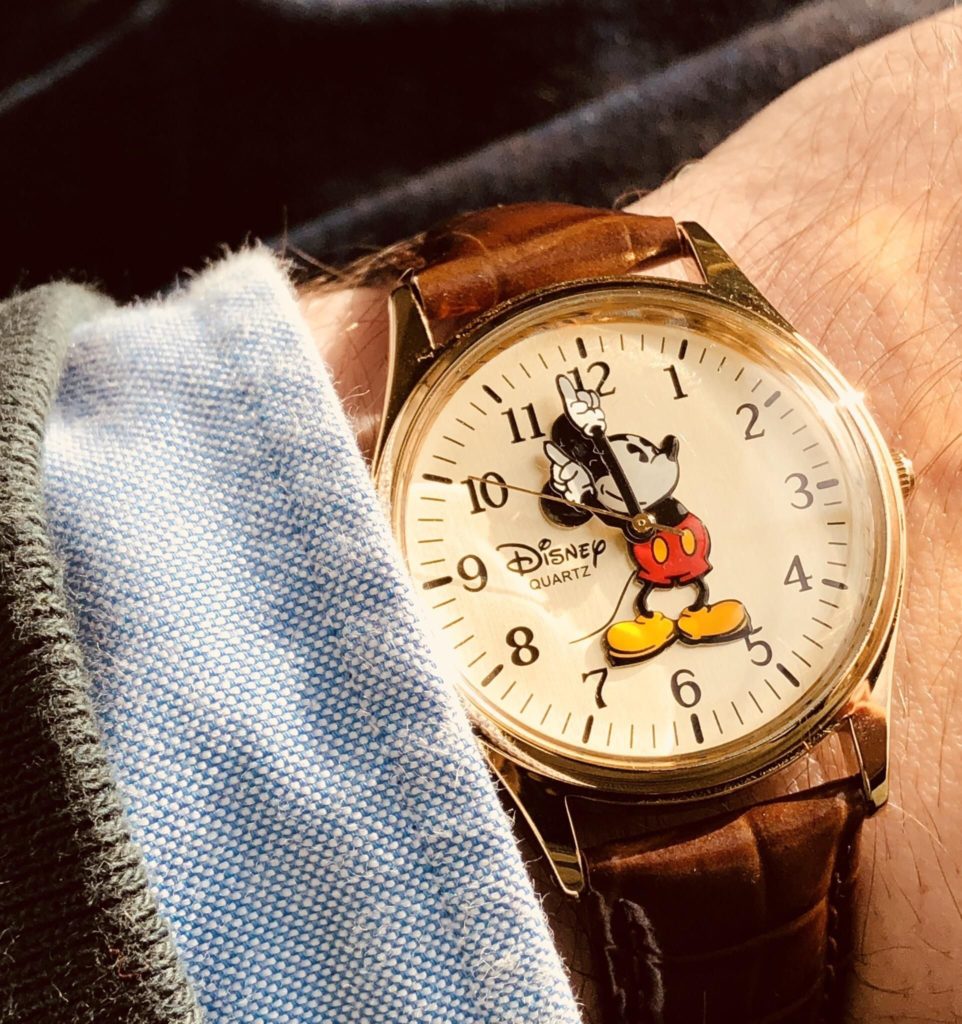
Image: Pinterest
Example 2: Dos Equis’ Most Interesting Man in the World
He’s no Mickey but he’s been able to amass a loyal following all over the world nonetheless. With a wry smile on his face, a sexy beard, and foxy hair, when he says ‘Stay thirsty, my friends’ at the end of the beer commercials, you can’t help but suddenly feel thirsty.

Image: Business Insider
Not only was he able to increase the brand’s sales, his emotional reach to his audience was so powerful that the actor – Jonathan Goldsmith – once revealed that he was approached by a man in a restaurant who told him that when he asked his son what he wants to be when he grows up, the kid answered: ‘I want to the Most Interesting Man.’
Potent Tools for Content Marketing
Because mascots have already established personalities and characters, you can create a whole content marketing campaign around them without much effort. This content can include blogs, podcasts, videos, and more. They can become a part of your explainer videos, a regular fixture of your Facebook posts, or even have their own social media to send an even more powerful message.
Example 1: Barbie
Barbie is a powerful mascot of its namesake brand – and is an Instagram influencer in her own right. Currently, she has a following of over 2 million people on Instagram and posts about fashion, lifestyle, traveling, and all things vogue.
As a mascot, Barbie is a whole content marketing campaign unto herself. If you look at her posts, they are professionally photographed, tell a cohesive story, are completely on-brand, and do a great job of presenting Barbie as a real (-enough) person.
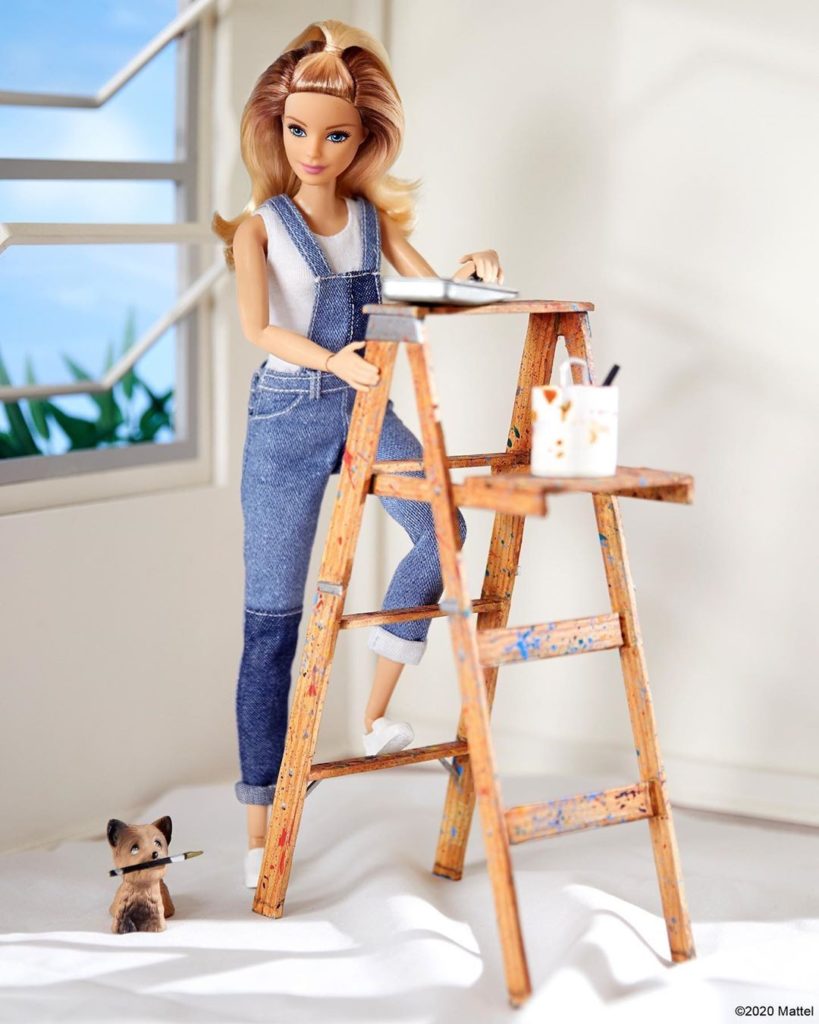
Image: Instagram
Example 2: Burger King
There was a time when Burger King’s mascot (of the same name) was as popular as the franchise itself. But then in 2011, the company decided to phase out the King. But the mascot was so popular and well-known and so relevant for some advertising opportunities that they decided to bring him back for a Movember ad shoot.
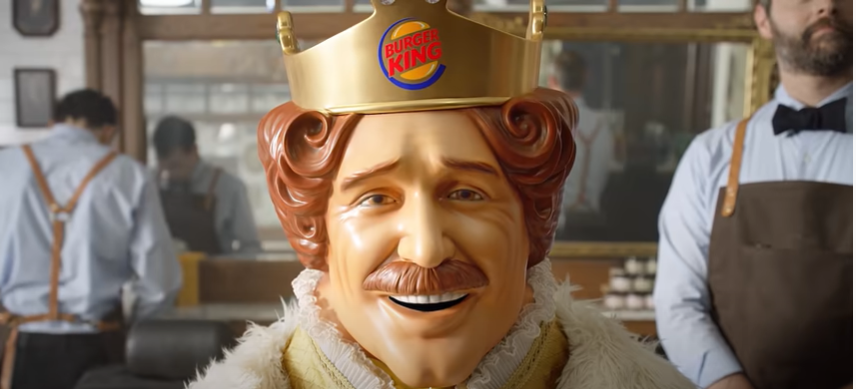
Image: YouTube
In the ad the king forgoes his beard and showcases a variety of mustache styles to raise awareness of men’s health issues. The spot was so brilliant and so on-point with the event that the King became relevant again.
Increases Brand Engagement
Another way mascots humanize a brand is by engaging with the audience with the help of their specific characteristics. For example, Kellog’s tiger connects with the children by being fun, Pillsbury’s doughboy engages with you through its love for bread and baking, Cheeto’s cheetah establishes a bond with you through its personification of all-things-cool.
These qualities and attributes of the mascots then transfer on to the brands and become a part of their message.
Another example of a highly engaging brand mascot is Mailchimp’s Freddie.
Example 1: Mailchimp’s Freddie
The mascot is a part of their brand logo and incorporates the friendliness and accessibility that the brand is known for. It often pops into your inbox offering your exclusive deals, insights, random advice, and sometimes, funny links, too.
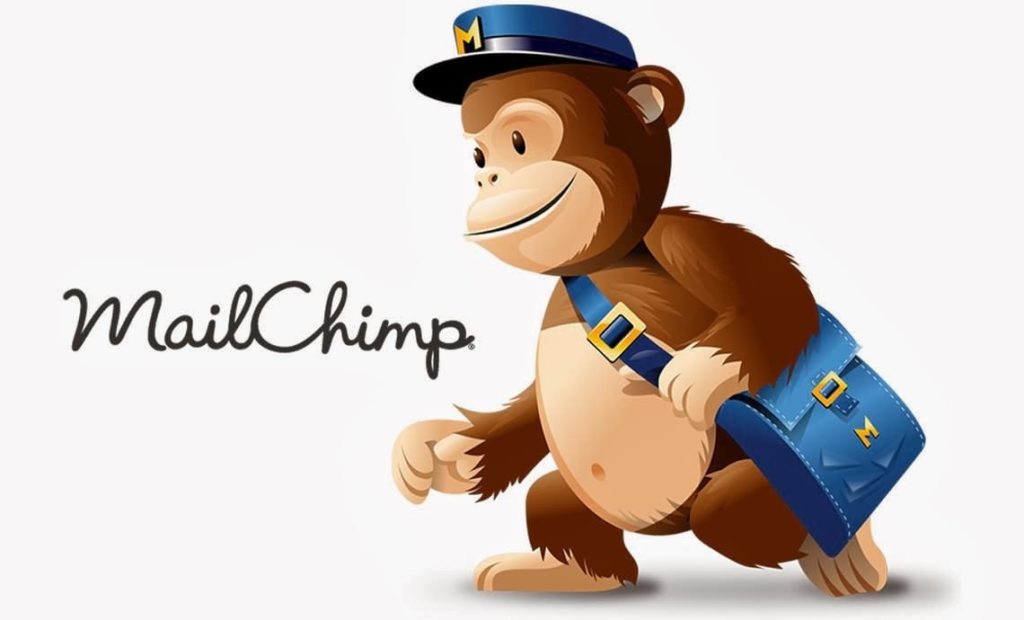
Image: Robert Katai
Example 2: Travelocity’s Gnome
Travelocity distinguishes itself from the competitors by claiming to be a choice of wise travelers who want better, more quality-oriented wandering options. Therefore, their mascot is an old and wise gnome called the Travelocity’s Gnome. Due to a viral ad campaign in 2004, the Gnome became so popular that it now has its own Twitter account from where it shares its travel adventures and actively engages with its audience through its fun-filled wisdom and funny one-liners.
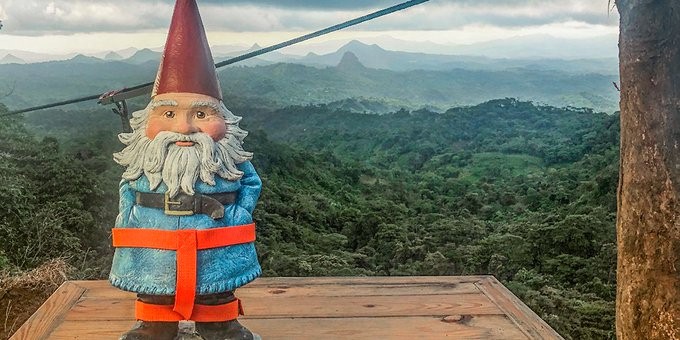
Image: Twitter
Educate on Social Messages
One of the greatest qualities that make brand mascots such powerful marketing tools is their flexible personality. A brand mascot can be fun and cheeky, but in times of crisis, emergency, or when social action is necessary, they can get serious and get stuff done. Because we attribute a lot of human qualities to them, we do not find it hard to believe that they will be affected due to changing times too.
Example 1: Hotels.com’s Captain Obvious
Therefore, in the present pandemic of Covid-19, Hotels.com, the travel booking-company launched its new advertising campaign featuring its brand mascot – Captain Obvious – urging all of us to ‘Stay at home’.
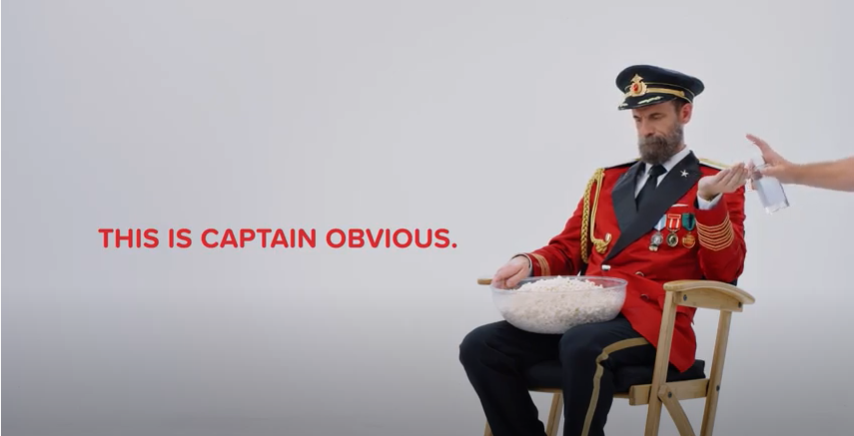
Image: YouTube
The ad campaign started with a video ad showcasing Captain Obvious about to snack on some popcorns. But before he does that, he cleans his hands with a bit of hand sanitizer while the screen reads ‘This is Captain Obvious. He’s going to be social distancing for a while. And you should too.”
The mascot doesn’t leave behind his brand character of being fun (and obvious) and still sends a powerful social message that is the need of the hour.
Example 2: AFLAC Duck
In 2016, the insurance giant AFLAC started a campaign to promote childhood cancer awareness and its efforts to fight the disease and stand by affected families.
The company’s iconic Duck became the face of the brand, naturally. The campaign consisted of launching My Special AFLAC Duck, a specialized robot with removable and washable skin that was designed to provide comfort to the children who wanted a clean, plush toy in their hospital beds, which they could carry with themselves.
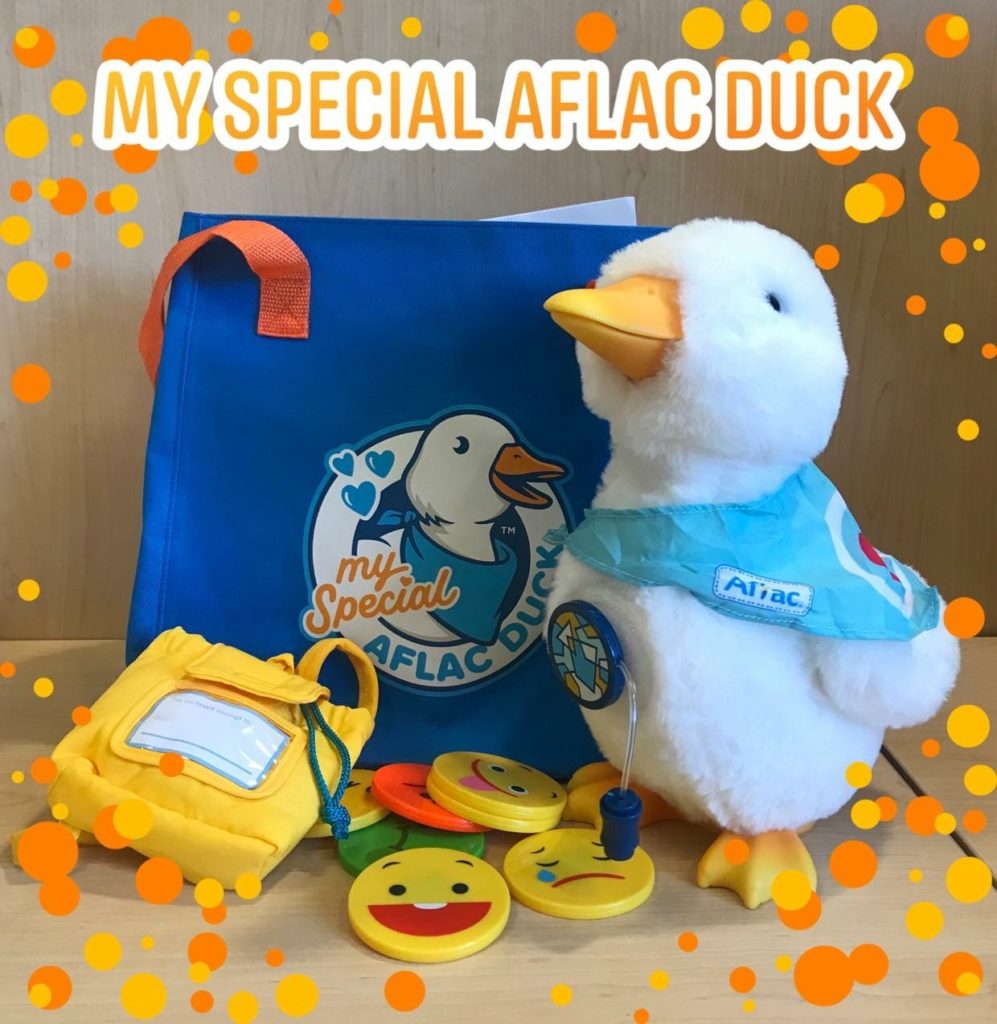
Image: SVMH
The campaign not only won awards but widespread recognition too. What’s more, it also launched the insurance company as an entity who gives back to the community and the AFLAC Duck acquired deeper meanings attached to its persona.
So there you have it. All the different ways a brand mascot can humanize your brand by being authentic, relevant, personified, and relatable.
But how can you design such a good brand mascot?
- Make sure your mascot has a story to tell; it can’t just be a fun fixture for your ads.
- Think of your company’s human attributes and see how your mascot can carry those forwards.
- The more real and authentic your mascot, the more flexibility it will have to evolve with changing times and in diverse cultures.
Final Word…
A well-designed mascot – whether a cartoon spokes character or a real human who you want to portray your brand – has the power to play a significant role in humanizing your brand. It does that through emotional connections, a relatable personality, a well-defined character, and signature features.
To make sure that it can tell your brand story effectively, think of ways that your consumers interact with your products/services, the problems they may be facing, and then come up with a mascot personality that addresses all those issues.
It will take time and a lot of focused effort, but in the end, you’ll get a spokesperson that has longevity, flexibility, and that is always available for you.

